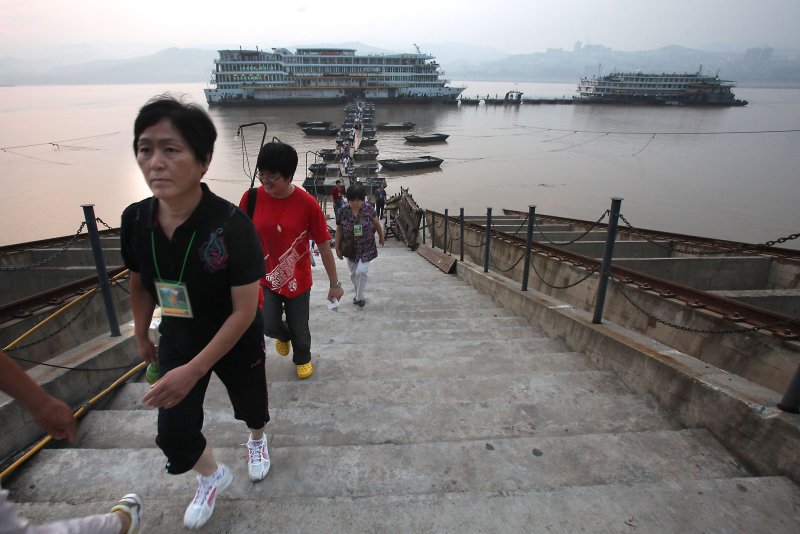Chinese tourists leave their cruise ships in Chongqing, China. The city is the site of the world’s largest former nuclear base, which was reopened after a yearlong renovation, according to China News Service. File Photo by Stephen Shaver/UPI |
License Photo
BEIJING, Sept. 26 (UPI) -- The latest tourist attraction in the southwestern Chinese city of Chongqing isn't an amusement park – it's a former underground nuclear facility.
The 816 Nuclear Military Plant, the world's largest underground nuclear base, began to be built in 1966 when China's relations with the former Soviet Union were deteriorating.
The 13 mile-long facility includes 18 artificial caves, 130 segments of road, bridges and pits. The largest man-made grotto in the area has a height of nearly 80 meters, as high as a 20-story building.
The plant included a nuclear reactor that processed plutonium-239, a key component of atomic bombs, and was built to withstand a 1-megaton explosion or a 1,000-ton smart bomb detonation.
The facility had undergone a yearlong renovation in order to turn the location into a new and improved tourist attraction. It first opened to the public in April 2010 but recently reopened, state-owned China News Service reported Monday.
The newly refurbished site will also open a third zone that was previously off-limits to the public in 2010. A tour of all three zones would take about three hours, according to the report.
Chinese Premier Zhou Enlai had ordered the facility be built as relations with Moscow deteriorated after the Sino-Soviet split. More than 60,000 workers played a role in the construction of the facility from 1966-84, according to the report.
The facility was officially recognized as a chemical plant until 2002, when China released previously confidential information about nuclear production at the site.
Liu Kangzhong, vice mayor of Chongqing's Fuling District, said the former nuclear plant would be used in "patriotic education," according to the report.















